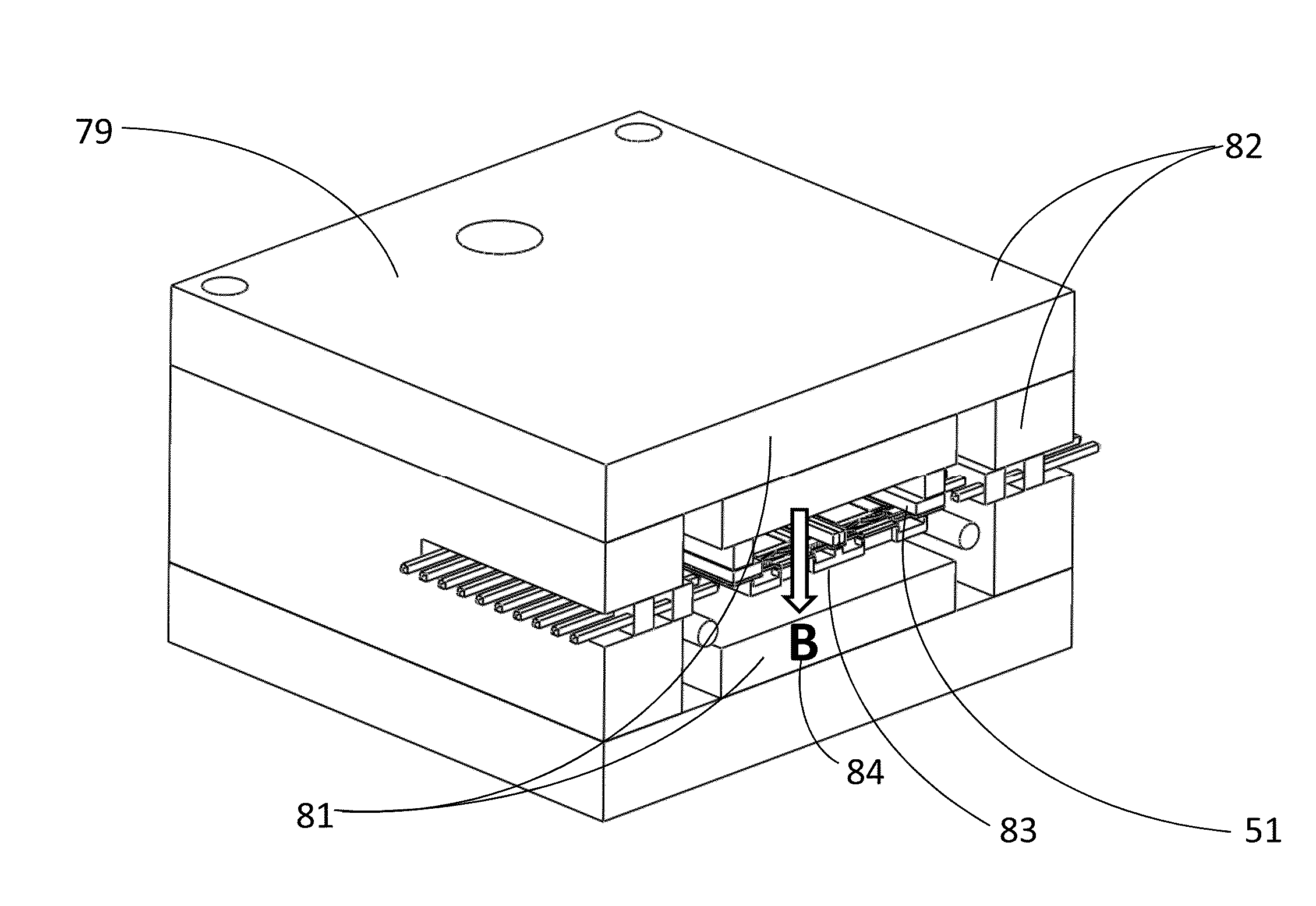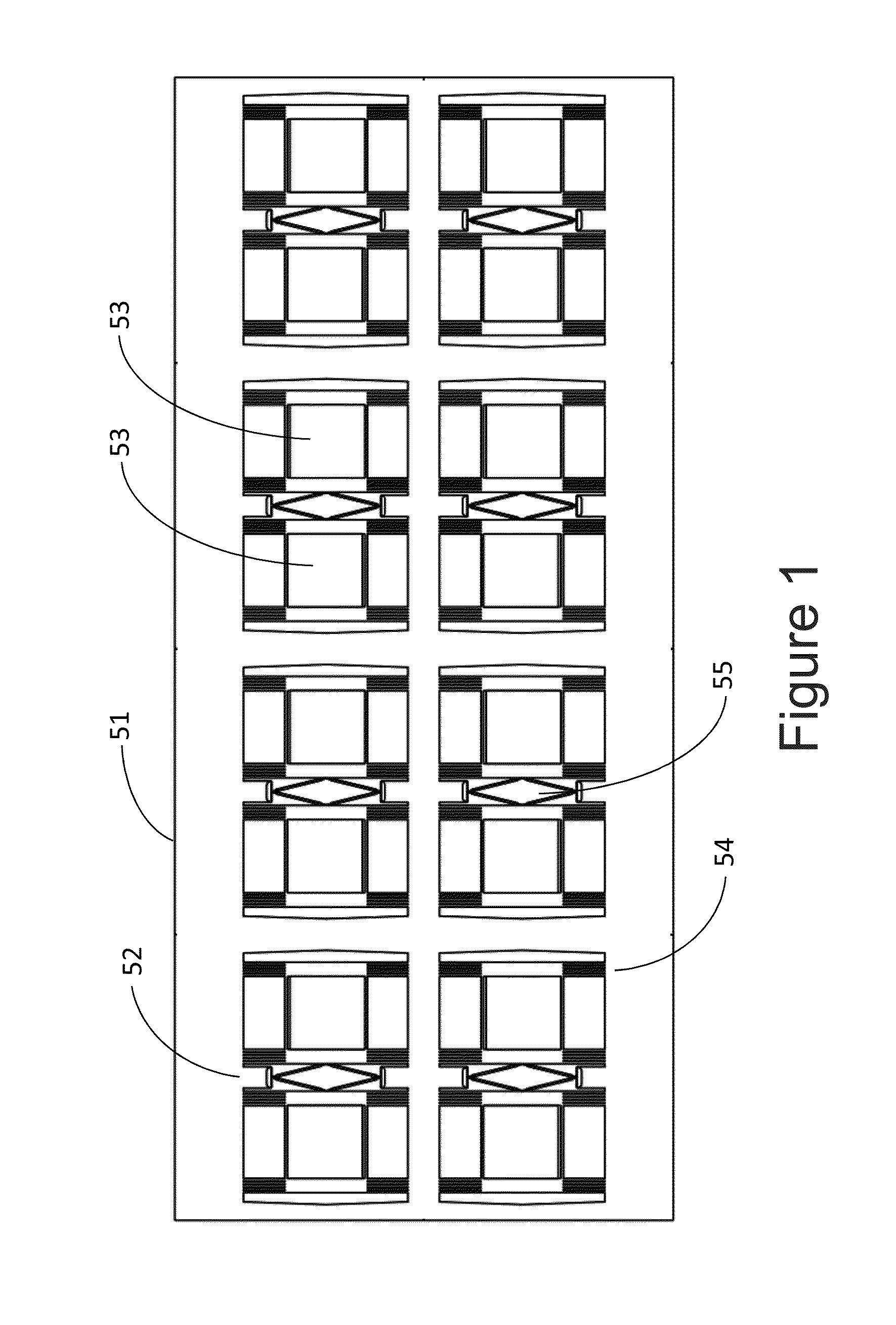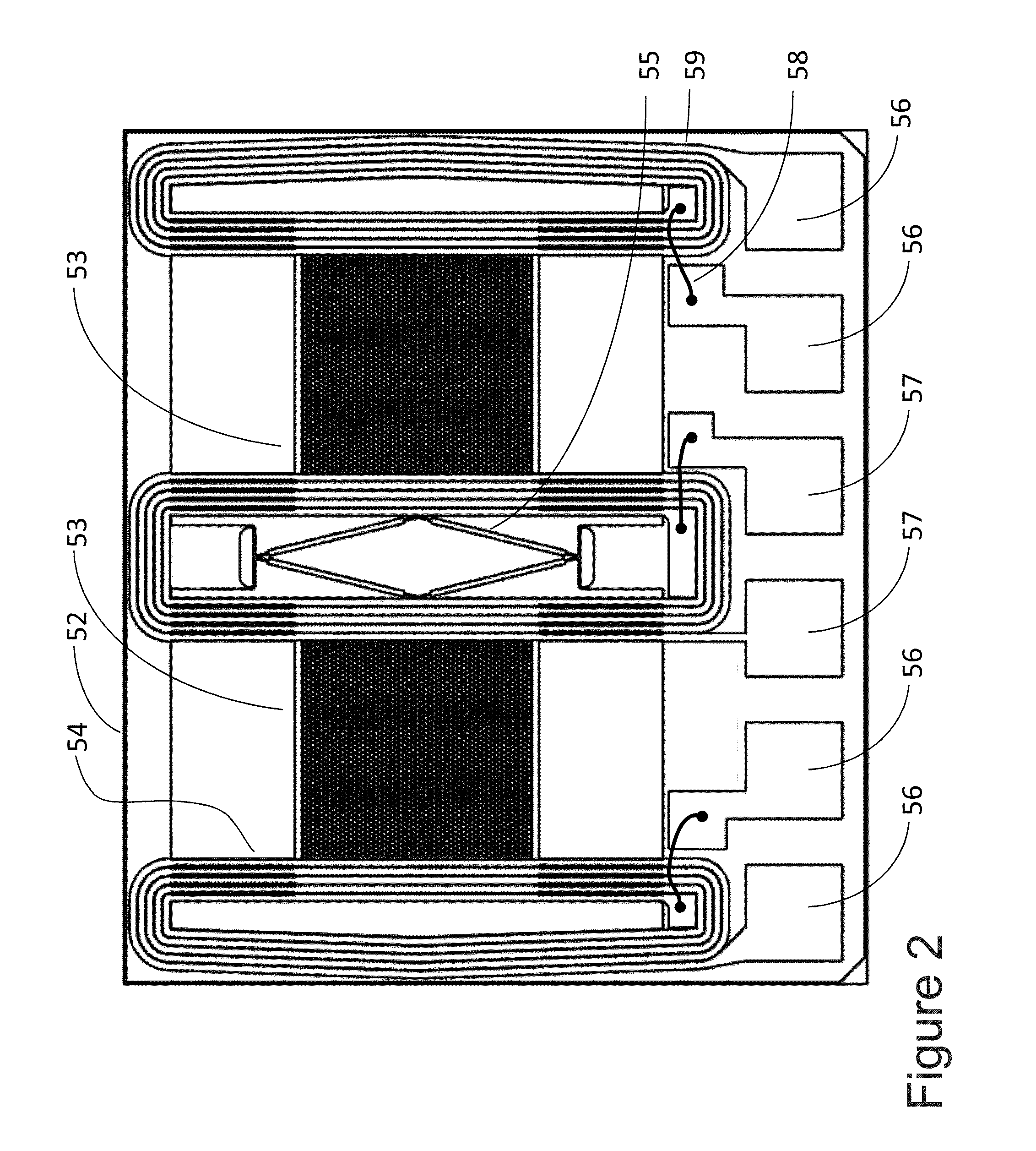Resonant micromachined biochemical sensor
a biochemical sensor and micromachine technology, applied in the field of chemical sensors, can solve the problems of reducing the q of the support structure, reducing the q of the vapor detection level, and displacing prodigious amounts of gas by the cantilever sensor, so as to reduce the energy loss to the support structure, minimize damping losses, and maximize q
- Summary
- Abstract
- Description
- Claims
- Application Information
AI Technical Summary
Benefits of technology
Problems solved by technology
Method used
Image
Examples
Embodiment Construction
[0063]The present application is a sensing system for detection of chemicals, biological compounds, and other potential items which impart a change of mass. At the heart of the system is a spring-mass-damper mechanical system that is maintained at resonance by electronics at its damped natural frequency. When the mass of the spring-mass system changes, the frequency of the system changes. This change in frequency is the essential signal for biochemical detection. The advantage of measuring frequency change is the ability to achieve accuracy of measurement orders of magnitude better than analog-to-digital convertor technology. Additionally, the signal processing is virtually all-digital with the inherent stability of digital signal processing.
[0064]The chemical sample collection / concentration system also has the advantage of capturing both particulate and vapor target chemicals. This is a significant advantage because some chemicals, such as explosives, have low vapor pressures and a...
PUM
| Property | Measurement | Unit |
|---|---|---|
| mass | aaaaa | aaaaa |
| weight ratio | aaaaa | aaaaa |
| weight ratio | aaaaa | aaaaa |
Abstract
Description
Claims
Application Information
 Login to View More
Login to View More - R&D
- Intellectual Property
- Life Sciences
- Materials
- Tech Scout
- Unparalleled Data Quality
- Higher Quality Content
- 60% Fewer Hallucinations
Browse by: Latest US Patents, China's latest patents, Technical Efficacy Thesaurus, Application Domain, Technology Topic, Popular Technical Reports.
© 2025 PatSnap. All rights reserved.Legal|Privacy policy|Modern Slavery Act Transparency Statement|Sitemap|About US| Contact US: help@patsnap.com



